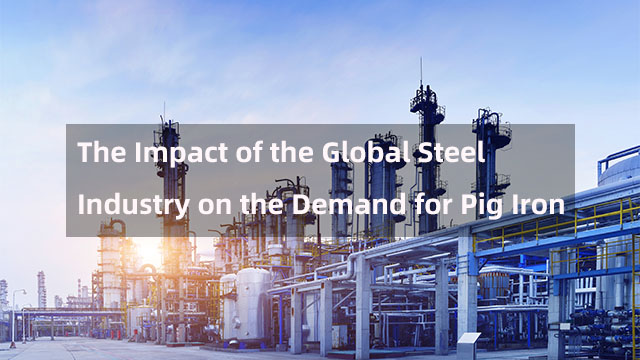The Impact of the Global Steel Industry on the Demand for Pig Iron
2025-02-10 09:21:47 hits:0
In the global industrial system, the steel industry is a crucial part. As a key raw material for steel production, the demand for pig iron is closely linked to the development of the steel industry. Thoroughly exploring the impact of the global steel industry on the demand for pig iron is of great significance for grasping the development trends of the steel industry chain and gaining insights into market dynamics.

In terms of market size, the global steel industry has been developing relatively steadily in recent years. Data from the World Steel Association shows that from 2020 to 2024, the global crude steel production increased from 1.878 billion tons to 2.056 billion tons, showing a steady upward trend. With the rapid development of emerging economies such as China and India, infrastructure construction has been vigorously promoted, and the demand for steel has been continuously growing. Take China as an example. Driven by the Belt and Road Initiative, numerous infrastructure projects have been launched. In 2023 alone, the apparent consumption of steel in China reached 950 million tons, which strongly drove steel production and further stimulated the demand for pig iron. The construction industry, as a major consumer of steel, with a large number of housing construction and bridge construction projects, directly drives steel production. For instance, in the construction of the Hong Kong - Zhuhai - Macao Bridge, 420,000 tons of steel were used, involving a large input of pig iron.
The changes in the economic situation also profoundly affect the demand for pig iron in the steel industry. During periods of economic prosperity, all industries develop rapidly, and the procurement volume of steel by the manufacturing industry, the automotive industry, etc. has increased significantly. Take the automotive industry as an example. In 2023, the global automotive production reached 85 million vehicles, and the average steel consumption per vehicle is about 1.2 tons. Components such as the vehicle body and engine in automotive manufacturing are inseparable from steel, which prompts steel enterprises to increase production efforts and raise the procurement volume of pig iron. Conversely, during economic recession phases, market demand shrinks, steel production declines, and the demand for pig iron decreases accordingly. During the global financial crisis in 2008, the steel production in the United States plummeted from 121 million tons in 2007 to 91.49 million tons in 2008, and further dropped to 69.5 million tons in 2009. Many pig iron production enterprises had to cut production or even suspend production.
Technological innovation is also an important factor affecting the demand for pig iron in the global steel industry. With the continuous progress of steel production technologies, new steel production processes have emerged, which have put forward new requirements for the quality and composition of pig iron, or have improved the utilization efficiency of pig iron in the production process and reduced unnecessary waste. For example, the new smelting reduction iron - making technology (COREX) developed by the German company ThyssenKrupp can directly use non - coking coal and iron ore to produce pig iron. It has a short process and low pollution, and can more precisely control the quality of pig iron, enabling the production of pig iron that meets special requirements. After adopting this technology, the utilization rate of pig iron has increased by about 15%, the impurity content has been reduced, and the quality of the produced steel is higher. This makes steel enterprises more inclined to purchase high - quality pig iron that meets specific standards when procuring pig iron, affecting the product structure and demand pattern of the pig iron market.
The global steel industry is closely linked to the demand for pig iron. The expansion of market size, the fluctuations in the economic situation, and the impetus of technological innovation affect the demand for pig iron from different perspectives and in different ways. For steel enterprises and pig iron suppliers, only by closely monitoring the changes in these factors can they remain invincible in the fierce market competition.

 en
en  fra
fra  de
de  ru
ru  gle
gle  th
th  ara
ara  it
it  jp
jp  kor
kor  zh
zh 


